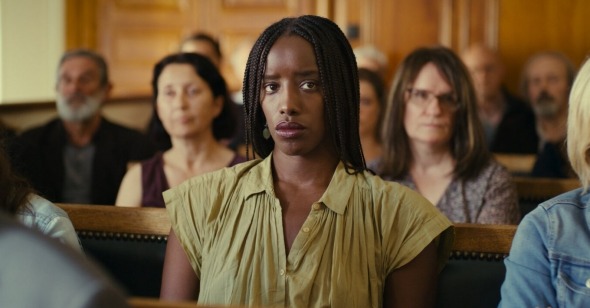That so many 2022 movies were about movies—as valediction or meta-commentary—wasn't surprising: even the hardiest cinephile might feel recurring twinges of anxiety about the future of the medium. The returns of industry saviors Top Gun: Maverick and Avatar: The Way of Water may have sent box-office pundits and bean counters into the cinematic heavens, but for the rest of us, it felt like death by a thousand cuts: every smaller title—films we used to call mid-budget prestige or “adult” dramas—struggled or completely disappeared. Even the streaming giants had trouble creating dialogue or excitement around their products. (In some cases, you might not have known their latest offerings existed at all.) It may have felt like a wasteland, but, judging by the voters in our annual poll, we nevertheless experienced a wealth of films that excited us and gave us hope—far more than would fit within the bounds of our traditional "Top Ten." And a few of them weren’t even about the movies.
As usual, our top ten films of the year were determined by polling our major contributors from the past year. Capsules below written by Mark Asch, Sam Bodrojan, Bedatri Choudhury, Matthew Eng, Eric Hynes, Michael Koresky, Chloe Lizotte, Jeff Reichert, Kelli Weston, Christopher Wisniewski, and Farihah Zaman.
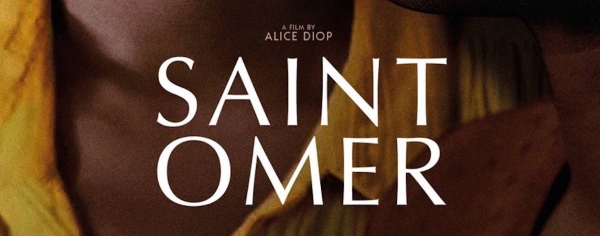
1. Saint Omer
Rama (Kayije Kagame) is a journalist and scholar attending the trial of Laurence (Guslagie Malanda), a woman in the French town of Saint Omer who has confessed to drowning her infant daughter. For Rama, this triggers an emotional reckoning represented by disjointed flashes of memories, hallucinations, and an atmosphere of dread. Rama is drawn to Laurence but haunted by what she does and does not recognize in her own life. The first fiction feature from documentarian Alice Diop is a courtroom drama, a mother daughter deep-dive, and a ripped-from-the-headlines true story that somehow defies the typical trappings of all these genres. In Diop’s film, it is impossible to separate the experiences of both women from their identities as immigrant or first-generation people, and in particular people of Senegalese descent living in France, one of their former European colonizers. Diop depicts a thousand tiny paper cuts that must simply go untended, such as a comment from Laurence’s former philosophy professor that it is suspicious she would want to study Wittgenstein instead of “someone closer to her own culture,” or a relatively kindly police officer who suggests that the incident of infanticide might be explained as an “African” ritual akin to female genital mutilation, a comparison which the predominantly white legal representatives accept without batting an eye. Like Rama, Laurence had intelligence and drive, but struggled with an angry, overbearing mother. Unlike Rama, Laurence found herself without resources and profoundly alone in a strange land. Laurence represents the path Rama’s life might have taken, in ways that are strikingly clear but never overtly emphasized, the script and direction allowing the mirroring between the two women to just exist, in much the same way Laurence and Rama sit apart from one another but in the same room, day after day, each contending with the deepest and darkest of their childhood traumas, yet never speak. They intersect directly only one time, when Laurence suddenly turns to meet Rama’s piercing gaze, an electrifying moment that is all at once chilling, conspiratorial, poignant, and relieving: the thrill of finally being seen. Diop offers no easy resolution in her precise yet meditative narrative, and no respite from the simmering intensity. Saint Omer is neither morality tale nor true crime offering; like the chimera evoked by Laurence’s lawyer in her closing statement, its form is beautiful, disturbing, mysterious. —Farihah Zaman
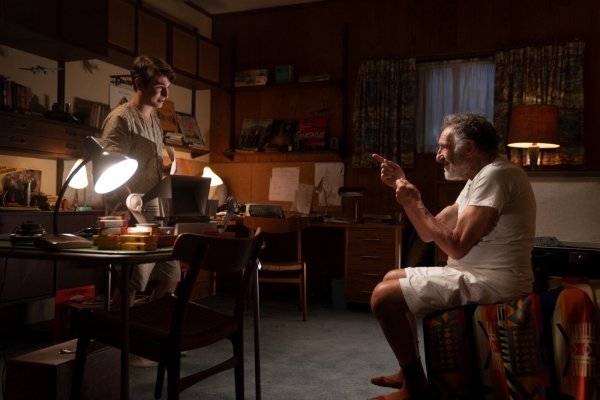
2. The Fabelmans
It’s a helluva thing to make a film unlike any of the dozens preceding it that also somehow recasts, reinvigorates, and deepens the entire catalog. Steven Spielberg’s entry into 2022’s crowded gallery of self-portraits of the artists as young men (and a few women) is his most overtly autobiographical, tracing his Jewish-American family’s passage to Arizona and then Los Angeles, concurrent with stand-in Sam Fabelman’s developing passion for cinema. Spielberg is so good at image-making that it’s possible, common even, to think that his images, and the stories they tell, are uncomplicated, frictionless. They’re not, of course, and never have been, but in the early scenes of The Fabelmans Spielberg seems to be playing with, or at least profiting from, our pleasure in watching Sam discover the pleasures of moviemaking, which nevertheless are never just about pleasure but also about processing and escaping, emoting and controlling. The adult director looks back kindly and generously to his younger fictionalized self, while that younger fictionalized self implicitly anticipates and critiques the preoccupations of the adult. And in the midst of all of this backward and forward gazing, all expressed exquisitely, confidently, entertainingly, the director and his audience labor to fashion a clearer view of Mitzi and Burt, beloved, diverging parents inadequately understood by Sam, yet possibly, finally, better seen, thanks to this elaborate, masterful, defiantly naive refractory machine, by Steven. —Eric Hynes
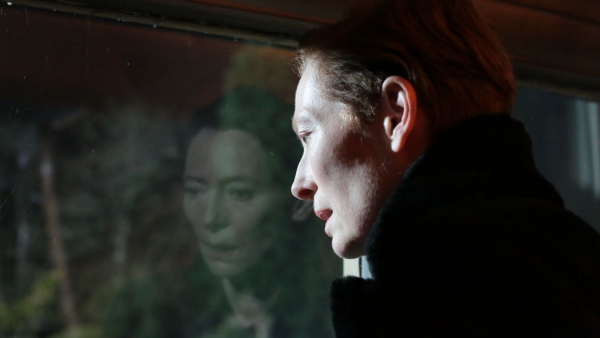
3. The Eternal Daughter
In a year when more than a few movies seemed obsessed with unpacking cinema itself, what movies mean, what they can and can’t do, the effect they have on lives lived outside the frame, their tortured history as a commercial art form, Joanna Hogg quietly delivered us a film that doesn’t textually address its medium but which still breathes its expansive possibilities in every shot, every cut. It proved rejuvenating viewing. Hogg’s paucity of elements—one lead actress, two main characters, a single location—resulted in an endlessly intriguing work, one clearly besotted by and marinated in myriad cinematic forbears (creaky British ghost stories, taut Hitchcock thrillers, florid melodramas), and at the same time, through the application of the filmmaker’s rigorously modern aesthetic and canny deployment of one of our best contemporary performers in dual roles, feels frightfully of-the-moment. After having built toward, and pushed through, the personal excavation of her Souvenir project, Hogg seems freshly unbound, emboldened while playing with the well-worn tics of B-level dark house creepies, yet, miraculously, in her film’s shattering climax, she still lands us squarely in the well of the deep personal traumas and lingering obsessions she’s been mining her entire career. Katherine Connell, writing in our 2021 Top Ten feature, described Hogg’s The Souvenir Part II as “her most haunted work to date.” With The Eternal Daughter, the filmmaker went ahead and held her own beer, producing a wickedly unexpected, classic ghost story that only she could have made. It’s been some time since a movie treated things that go bump in the night with such formal elegance and respectful depth. Perhaps we’ll be treated to another sequel? —Jeff Reichert
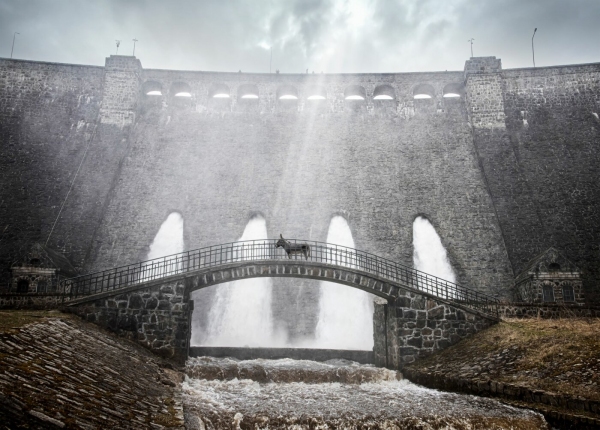
4. EO
There is no critter too small, no vista too splendid, and no Isabelle Huppert cameo too perverse to find a place in EO. An uncategorizable milestone in the career of 84-year-old Jerzy Skolimowski, EO plays like a dream of Robert Bresson’s 1966 Au hasard Balthazar, while expanding the earlier masterpiece’s empathic capacity. Eo (seamlessly played by six donkeys over the course of the film) is wrenched from his home in a bankrupt circus and propelled onto a perilous odyssey from Poland to Italy to death, along the way encountering fellow wildlife and solemn laborers who ignore, abuse, and only occasionally dote on the vulnerable creature. Yet Eo is no vacant symbol of humankind’s cruelty but a dynamic, soulful being, endowed with memories, agency, and basic needs not so different from our own: to be looked after, nestled, adored. Skolimowski depicts this passage with mythic, multi-perspectival grandeur, as in an elongated trek through a nighttime forest that comes alive with frenzied, pulse-quickening exuberance. The restless facility with framing, lighting, camera movement, color, cutting, and sound that Skolimowski and his collaborators exhibit makes for one of the year’s truly novel filmic achievements, each element confidently marshaled to illustrate Eo’s inner being and the polarized, man-ruled world that heedlessly quells it. In its affection, indignation, call to adventure, and unwavering insistence on Eo’s selfhood, Skolimowski’s film is without parallel in contemporary international cinema. For all its stunning sweep, it returns us again and again to an intimate moment of remembered bliss, encapsulated in the tender touch of a beloved’s hand on downy fur, a saving grace on the road to annihilation. In EO, Skolimowski stares intently at the planet we still inhabit and maintains that its suffering is not inevitable. —Matthew Eng
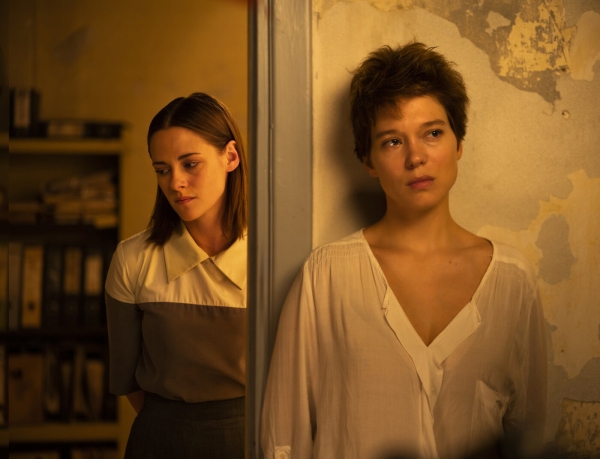
5. Crimes of the Future
Somewhere on the Adriatic Sea, humans are evolving past their ability to feel pain. Through shadowy alleyways and underground happenings drifts cloaked performance artist Saul Tenser (Viggo Mortensen), in wheezing deterioration from incubating tumor-like organs; his partner, Caprice (Léa Seydoux), surgically extracts them in live shows, a source of sexual catharsis for viewers and performers alike. Like revisiting an old friend, David Cronenberg’s latest abounds in cool aphorisms and squishy, fossil-like inventions—look no further than the lurching spinal cord of the “breakfaster” chair that aids Tenser’s digestion—but Crimes is no greatest hits reel. Instead, it hums along on Cronenberg’s inexhaustible curiosity about human nature, bodily mortality, and artmaking, which makes his postmodernist “future” urgently of the present. Cronenberg is never desperate to prove his intelligence—his adaptations of Ballard, DeLillo, and Burroughs succeed because of this humility, every choice in service of the ideas at hand. He easily shepherds these cerebral concerns into pop entertainment, with dry comedy and bona-fide movie stars, a rare breed in contemporary filmmaking. Perhaps what seems to be dying is only mutating. One enduring quote from Crimes offers a missive to mainstream cinema at its most bloodless: “BODY IS REALITY.” (And will any line reading this century outdo Kristen Stewart’s expertly plosive rendition of “po-tent mea-ning”?) —Chloe Lizotte
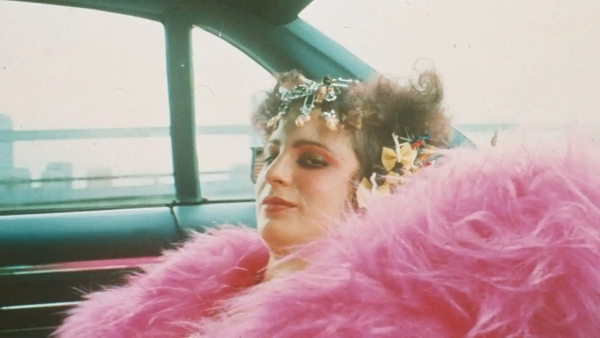
6. All the Beauty and the Bloodshed
When you run away from home to make art in the city, one of the first things you and your new friends bond over is the culture you fled. Middle-American kitsch was the shared heritage of the Downtown ’80s: Kenny Scharf’s paintings riffing on Hanna-Barbera cartoons; Ann Magnuson’s Space Age dance parties; Tom Rubnitz’s channel-surfing comedy videos; even Klaus Nomi’s hauntingly campy cover of Lou Christie’s “Lightnin’ Strikes.” Working amid this scene, Nan Goldin traded in similar currency, the ironic iconography of a lost home, with her Ballad of Sexual Dependency, which she presented as a carousel slideshow, like a vacation album projected onto a wall for fidgety neighbors. All the Beauty and the Bloodshed shows how the psyche and project of a major American artist was formed in the crucible of the postwar nuclear family (just like The Fabelmans!). Director Laura Poitras juxtaposes Goldin’s real family photos—candids and portraits, taken in a typical suburban ranch house, of the brilliant, troubled older sister she lost to psychological injury and repression—with the Ballad, which canonized her nonconforming, often vulnerable friends and peers as a family to replace the one she lost, or at least to memorialize properly this time. And in portraying Goldin’s present-day agitations against the opioid-crisis profiteers of the Sackler family, the documentary shows how activism can create community and practice remembrance in the same way that art does. —Mark Asch
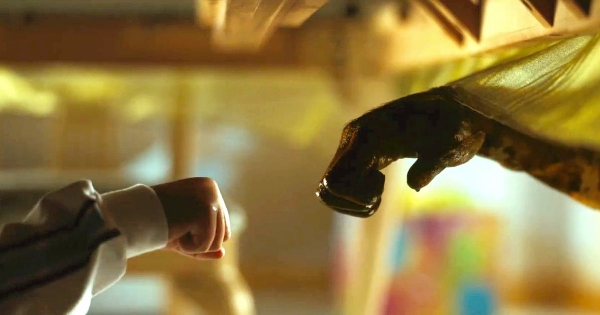
7. Nope
In an era when most large-scale American filmmakers interpret “meaning” as a series of cute clues and easter eggs, Jordan Peele continually reminds audiences—those paying attention, at least—that popular art can be ambitious without reducing movies to games for self-impressed decoders. The thrill of Nope is not that one can “interpret” its meanings, but that all the things it’s saying—about spectacle-obsessed culture; about methods of mass consumption; about the desperate, hubristic drive to harness and contain nature; about the erasure of Blackness from the historical cinematic record; about the simultaneous sturdiness and fragility of generic forms—are demonstrably inextricable from the narrative and the experience of watching it. With a limited scope (just two basic locations: the Haywood family ranch and the Jupiter’s Claim amusement park) yet an expansive visual canvas (the Southern California desert hasn’t looked as eerily beautiful on screen in quite some time), Peele’s experiment in terror is aggressive in its drive to disorient. While its story—about a brother and sister (Daniel Kaluuya and Keke Palmer, with effortless chemistry and blazing star wattage) risking their lives to capture evidence of alien life—is all about getting the “money shot,” the film is sly in its refusal to really provide any of its own; its scares are largely abstracted into sonic effects or left off-screen. Which doesn’t stop it from being (at least for this viewer) the scariest American movie in many a moon. It’s a film so abundant in conception that not only can each viewer see something different, they can feel something different. One person’s ecstatic thrill ride is another’s gleeful meta-comedy is another’s gut-wrenching horror—which brings us to Gordy, the most wickedly imagined character in any recent film. As humanistic a creation as Skolimowski’s poor Eo, the rampaging chimpanzee, whose harrowing flashback crucially comes at the film’s almost exact mid-point, is the monstrousness of human supremacy incarnate. That Gordy’s actions and fate lead to little more than future generations of exploitation and devouring spectacle shows our remarkable capacity to learn nothing from our mistakes. —Michael Koresky
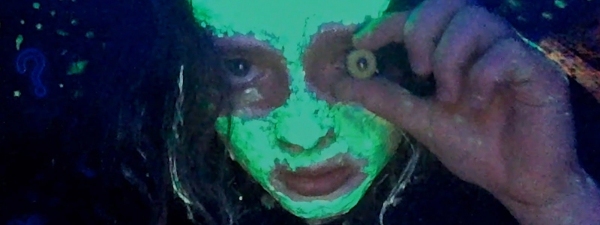
8. We’re All Going to the World’s Fair
In the two years since We’re All Going to the World’s Fair first screened at Sundance, Jane Schroenbrun’s instantly iconic mind palace of dysphoric adolescence has only become more eerie and impressive. The film follows a young girl’s obsession with a creepypasta augmented reality game as she loses her own grip on reality, spurred on by a faceless man through various online missives. Schroenbrun sews the film together with a pinpoint-precise simulacrum of a long-gone heterogeneous internet. Anna Cobb’s central performance, so much of which involves just looking at screens, achieves a level of exposed-nerve honesty rare amongst adult performers, let alone children. World’s Fair refuses to settle in the mind. It evokes the emotional baggage of grooming, the transgender compulsion to build lore for suffering in place of intimacy, the uncanny rejection of the safety inherent to a childhood bedroom. The film remains elusive even in its tiniest details: the trees next to an East Coast highway in winter; a MacBook open to Photo Booth mounted on the seat of a chair; a New Year’s Eve celebration shot with the tenor of a UFO sighting. It is a film so specific, so cutting, that any person who watches it feels like it is speaking solely to them, whispering painful secrets they had long dared not utter. —Sam Bodrojan
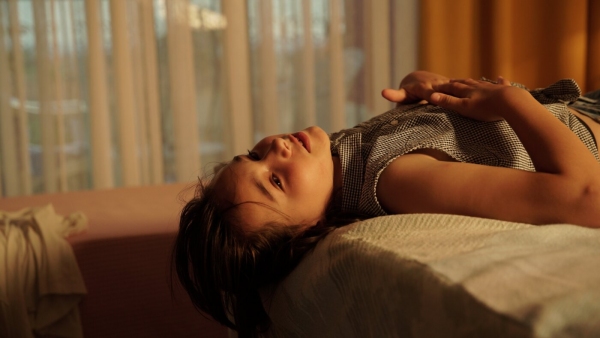
9. Aftersun (tie)
For much of its running time, the debut feature from Charlotte Wells seems uncomplicated: a nostalgic dive into the sun-soaked memory of a holiday that 11-year-old Sophie (Frankie Corio) shared with her winsome, freshly 30-year-old father Calum (Paul Mescal).Yet even before its gradual reveal, a lingering shadow veils the film, pregnant with a foreboding we cannot quite locate well into its second act: grief. These girlhood scenes are often interrupted by fleeting glimpses of an older, more somber Sophie, a new parent herself. She pours over old videos of her father, shot by her, on this trip and we have a sense that she returns to this handmade archive compulsively. But by now we realize the aching futility of her project: how to make sense of this person, so long lost to her? (Indeed, how to make sense of any parent?) More specifically, what could these images possibly reveal about Calum, forever suspended in time, trapped at this age? Unlike Sophie, too young then to register such silent details, we discover a man vulnerable to abrupt mood changes and on occasion so enveloped in his profound, unspoken melancholy that it sends him blindly running into the sea. Sometimes parenting requires much effort on his part, in between masking his sadness and shifting instinctively from father to goofy older brother. But inevitably we, too, must accept his insurmountable illegibility. Graced by Wells’s artful restraint and Blair McClendon's seamless editing, Aftersun emerges as a quietly rich and emotionally generative reflection on loss. —Kelli Weston
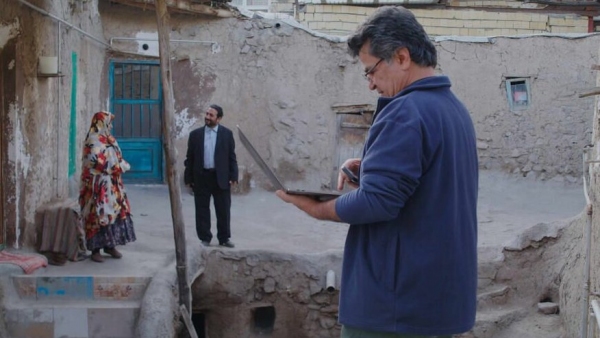
9. No Bears (tie)
Iranian director Jafar Panahi doesn’t take filmmaking lightly. For more than ten years he has risked death and further imprisonment by continuing to make films in the face of a state-imposed ban—steely in his guiltless resolve to be a chronicler. We are used to seeing him play himself (or a lightly fictionalized version of himself), and we’re used to raging while witnessing such an artist’s spirit being caged by an authoritarian government. But No Bears is different. Playing himself—in a film made shortly before he was arrested a second time in real life—Panahi is still a persecuted artist, but he isn’t drawing out our easy sympathy. No Bears is a film within a film. Holed up in a rented house in a village on the Iran-Turkey border, Panahi tries to direct a production over Skype, puppeteering his actors. Unwittingly, he ends up making another film, a hobby-like chronicling of the village and its denizens. This unexpected second film is the one that lands him in trouble and endangers those around him. Astonishingly enough, from the literal margins of the country that has banished him and the ever-thinning lines between life and death, freedom and capture, the man turns the lens on himself and questions the moral high ground that all filmmakers take with their art. The impulse to pick up a camera—an impulse that has defined Panahi's life and career—becomes a destructive as well as creative act. With a self-reflexivity absent in the most privileged and comfortable of filmmakers, Panahi lifts the veneer of self-righteousness off the narcissism that can fuel art-making. No one is exempt from this critique, least of all himself. —Bedatri Choudhury
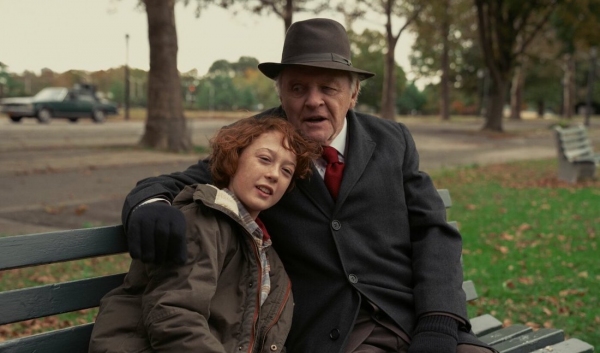
10. Armageddon Time
Set at the dawn of the Reagan era in 1980, James Gray’s Armageddon Time sits at the chronological midpoint between the Holocaust and the Trump administration, itself arguably bookended by the white nationalist rally in Charlottesville and the BLM protests that followed the murder of George Floyd. It is tempting to read Gray’s movie as an autobiographical portrait of the Jewish filmmaker as young man, à la The Fablemans. Drawn from Gray’s memories of his own childhood in Queens, it charts the academic and emotional struggles of young Paul Graff (Banks Repeta), as well as the emergence of his budding artistic sensibility, against the backdrop of a rapidly changing family dynamic. Gray has other matters on his mind, though. This is clear early in the film, when Anthony Hopkins, who gives a quiet, effortlessly towering performance as Paul’s grandfather, delivers a horrifying monologue about anti-Semitic violence that will come to haunt the film. As the movie progresses, Paul will carry his awareness of inherited victimhood along with a growing sense of his privilege, revealed to devastating effect through a friendship with his Black classmate Johnny (Jaylin Webb), which ends in implied tragedy. Because Gray is who he is, Armageddon Time is not and could not be Johnny’s story. Instead, this beautifully acted, classically crafted period film is a depiction of how easily those scarred by historical trauma become, through corrosive systems of power, complicit in reproducing it. Armageddon Time is an angry movie that excavates a divisive and bleak historical moment—our own. —Chris Wisniewski
